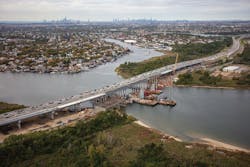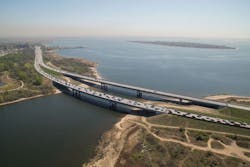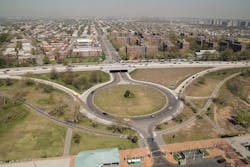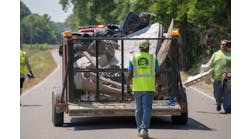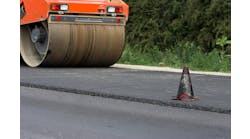When your project is a decade in the making, you’re going to coordinate with a whole lot of acronyms.
In the instance of the Belt Parkway Replacement project, the list included NYCDOT, NYCDPR, NYCDEP, NYSDEC, FHWA, WSCG, USACE, OCMC, and NPS; you can look them up. My point, however, is that in order to make a project of this magnitude come in successfully, coordination is not only among the biggest challenges, it is also possibly the most important.
“We had so many agencies and offices that we used program management services [e.g., GPI/AECOM] to oversee everything from design to constructability,” NYCDOT Project Manager Daniel Hom told Roads & Bridges. “This helped us stay on track.”
The scope of the Belt Parkway demanded from the very start a phased construction arrangement. Phase 1, which was a $380 million contract that ran from October 2009 to October 2014 comprised the first half of the project, from Pennsylvania Avenue on for 2.5 miles, and saw three bridge replacements. Phase 2—$108 million; February 2013 to September 2017—handled Knapp Street to the Flatbush Avenue exit and the last two bridges. Finally, the $270 million Phase 3, which began in summer of 2015 and reached completion, punchlist items notwithstanding, this summer, saw the buildout of Flatbush to where the Paerdegat Basin limits left off.
All told this project reconstructed what is, according to GPI’s William Ferdinandsen, “the only direct thoroughfare from Manhattan to JFK Airport,” and in the process negotiated, pretty much the whole way through, several navigable bodies of water.
Originally built in the 1940s, this corridor was designed for a then-sizable 20,000 vehicles per day; that figure is presently 150,000. Among the main challenges for crews was keeping up a consistent traffic management program. It was a project requirement that three lanes of traffic be kept open in each direction at all times, and therefore, since this project was not meant to add capacity but rather to reconstruct and expand the current lane configuration to meet present standards (12-ft driving lanes, with 4-ft inside and 10- to 12-ft outside shoulders, and six new bridges capable of future expansion), the traffic management program had to address the project’s needs less as a series of contracts and more as a single flow corridor.
“In order to keep three lanes going at peak periods, we did a lot of work at night,” Ferdinandsen said. “We worked with all the multiple designers to reenvision the work coordination and traffic strategies. In doing so, for the first phase, we got what was meant to be a six-year contract down to, ultimately, less than four years.”
Marine work also required extensive environmental and ecological planning and mitigation.
“We had a full-time environmental engineer on site at all times,” Ferdinandsen said. “At one point there was a wetland mitigation subcontract that went out and ran from 2011 to 2013, which basically addressed all mitigation concerns for all the bridges within the project limits. And there was a five-year monitoring period that followed.”
All told, the Belt Parkway project’s history of collaboration and attention to a complex, multifaceted timeline served all players well.
“Back in phase 1, the contractor met an early completion incentive. They came in 428 days early and earned a $15 million bonus,” Ferdinandsen said. “We applied lessons learned from phases 1 and 2 to the Mill Basin work (phase 3), and came in a year early on that, and the contractor earned a $12.5 million bonus, as well. These incentives really encouraged the contractors to come up with unique solutions and get the work done as quickly as possible.”
